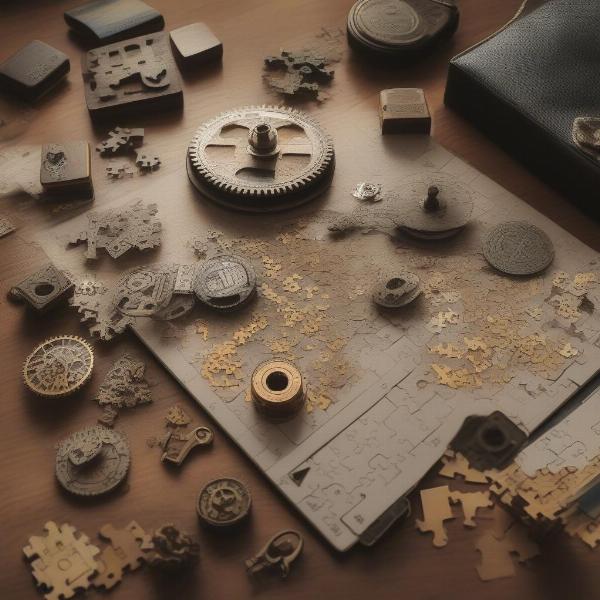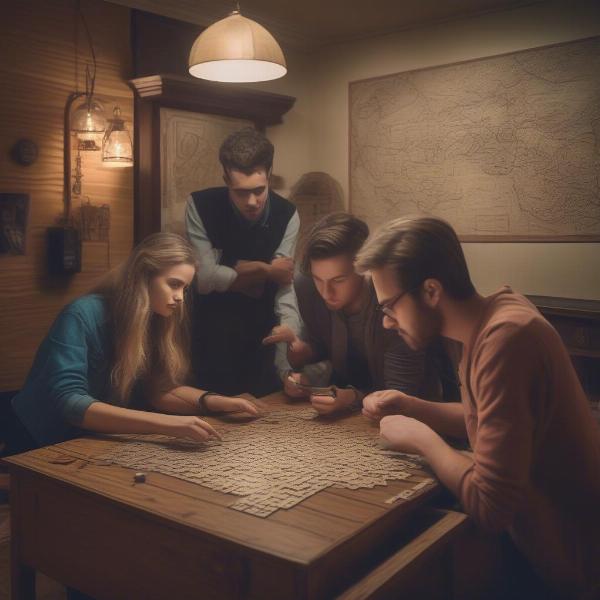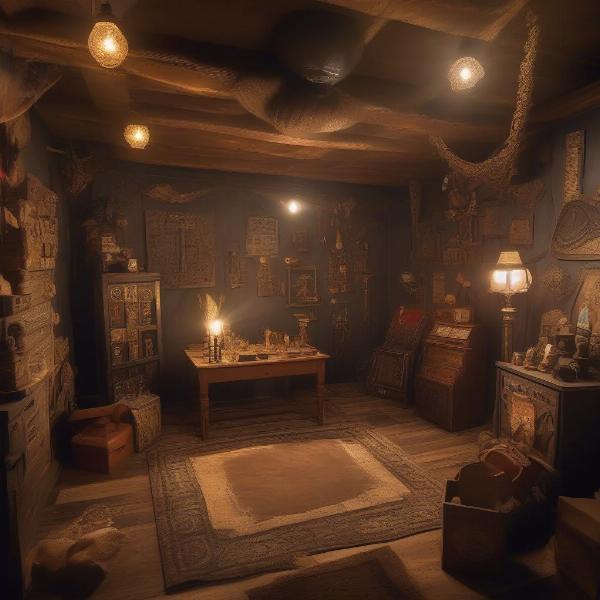Creating an unforgettable escape room experience at home is easier than you think. With a little creativity, planning, and resourcefulness, you can transform your living room, basement, or even your backyard into a thrilling adventure for friends and family. This guide will provide you with everything you need to know to make an escape room game at home, from brainstorming the perfect theme to crafting challenging puzzles and setting the scene for an immersive experience.
Choosing a Theme and Narrative
The first step in making an escape room game at home is choosing a captivating theme. This will serve as the foundation for your entire escape room experience. Think about what interests you and your potential players. Do you enjoy mysteries, fantasy adventures, historical events, or sci-fi thrillers? A strong theme will tie all the elements of your escape room together, creating a cohesive and engaging experience. Consider a narrative that unfolds as players progress through the puzzles, adding depth and excitement to the game.
Designing Puzzles and Challenges
Once you’ve settled on a theme, it’s time to start designing the puzzles and challenges that will form the core of your escape room. The key is to create a variety of puzzles that cater to different skill sets and interests. Incorporate logic puzzles, riddles, word games, ciphers, hidden objects, and physical challenges to keep players engaged and on their toes. Ensure the puzzles are challenging yet solvable, striking a balance between difficulty and fun.
 Designing Puzzles for Home Escape Room Game
Designing Puzzles for Home Escape Room Game
Gathering Materials and Props
Now that you have your puzzles designed, it’s time to gather the necessary materials and props to bring your escape room to life. This could include anything from locks and keys to everyday household items that can be repurposed for puzzles. Get creative and think outside the box! Visit thrift stores, craft stores, and even your own attic to find unique and interesting items that can enhance the atmosphere of your escape room.
Setting the Scene and Atmosphere
Creating the right atmosphere is crucial for an immersive escape room experience. Use decorations, lighting, sound effects, and music to transform your chosen space into the world of your chosen theme. Dim the lights, play some thematic music, and add props that align with your narrative to create a truly engaging and believable environment.
Testing and Refining Your Escape Room
Before you invite your friends and family to play, it’s essential to test your escape room thoroughly. Recruit a few willing testers to run through the game and provide feedback on the puzzles, the flow of the game, and the overall experience. This will help you identify any areas that need improvement or adjustments before the grand opening.
 Testing Home Escape Room with Friends
Testing Home Escape Room with Friends
Tips for Creating a Successful Escape Room
- Start small: Don’t try to create an overly complex escape room for your first attempt. Start with a smaller scale and gradually increase the complexity as you gain experience.
- Focus on the story: A compelling narrative will keep players invested in the game and motivated to solve the puzzles.
- Use a variety of puzzles: Incorporate different types of puzzles to cater to different strengths and preferences.
- Provide hints strategically: Offer hints only when players are genuinely stuck to avoid spoiling the challenge.
- Get creative with the theme: Don’t be afraid to think outside the box and create a unique and memorable experience.
Different Types of Escape Rooms to Consider
Besides the traditional lock-and-key escape rooms, you can explore other variations:
- Digital Escape Rooms: These leverage online platforms and software, incorporating multimedia elements and digital puzzles.
- Portable Escape Rooms: Design compact, self-contained escape room kits that can be easily set up and transported.
- Outdoor Escape Rooms: Utilize your backyard or a local park to create an escape room adventure in the natural environment.
Benefits of Creating Your Own Escape Room
Making an escape room game at home offers several advantages:
- Cost-effective entertainment: It’s a significantly more affordable alternative to commercial escape rooms.
- Creative outlet: Unleash your creativity in designing puzzles, crafting props, and building a unique narrative.
- Team-building activity: It’s a fantastic way to foster teamwork, communication, and problem-solving skills among players.
- Personalized experience: Tailor the theme, puzzles, and difficulty level to perfectly suit the interests and abilities of your group.
Conclusion
Making an escape room game at home can be a rewarding and enjoyable experience. By following these steps and letting your creativity flow, you can create an unforgettable adventure for your friends and family. So gather your materials, brainstorm your puzzles, and get ready to unlock the fun of a homemade escape room experience.
 Finished Home Escape Room Setup
Finished Home Escape Room Setup
FAQ
- How long does it take to create an escape room at home? The time required varies depending on the complexity of your escape room. It can range from a few days to several weeks.
- What’s the ideal number of players for a home escape room? A group of 4-6 players is generally recommended for optimal teamwork and engagement.
- Where can I find inspiration for escape room puzzles? Explore online resources, escape room blogs, and even commercial escape room websites for puzzle ideas.
- Can I create an escape room on a budget? Absolutely! Many everyday household items can be repurposed for puzzles and props, making it a cost-effective activity.
- How can I make my escape room more challenging? Introduce time limits, complex puzzles, and hidden clues to increase the difficulty level.
- What if my players get stuck on a puzzle? Prepare a system for providing hints strategically, without giving away the solution too easily.
- Can I reuse my home escape room? Yes, you can reuse your escape room with different groups or even modify it with new puzzles and challenges for future use.

